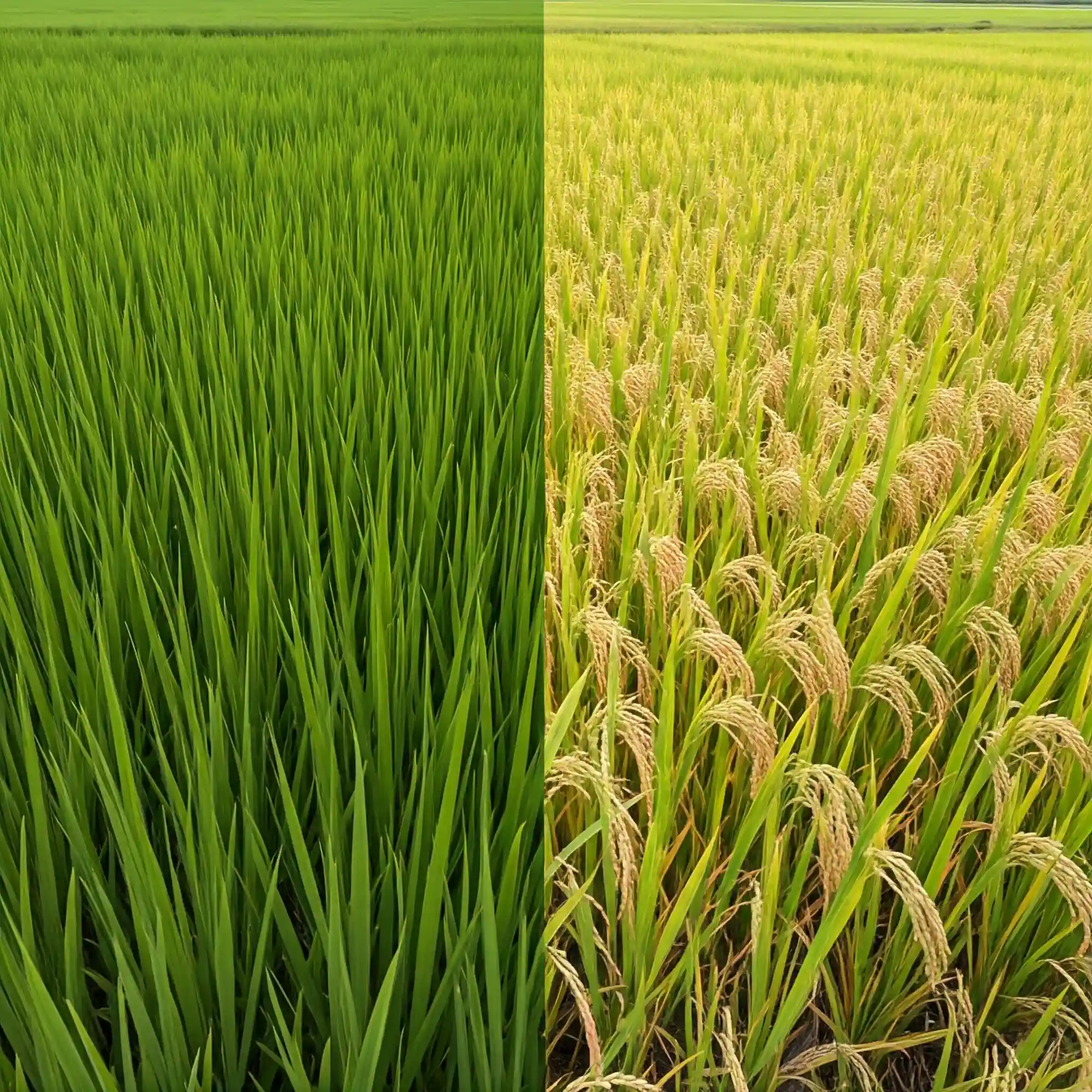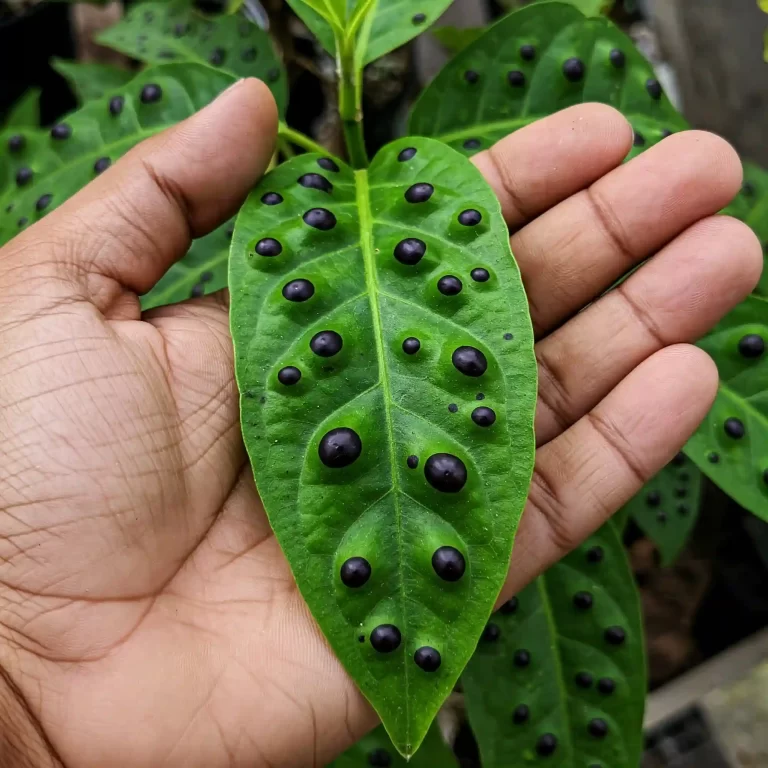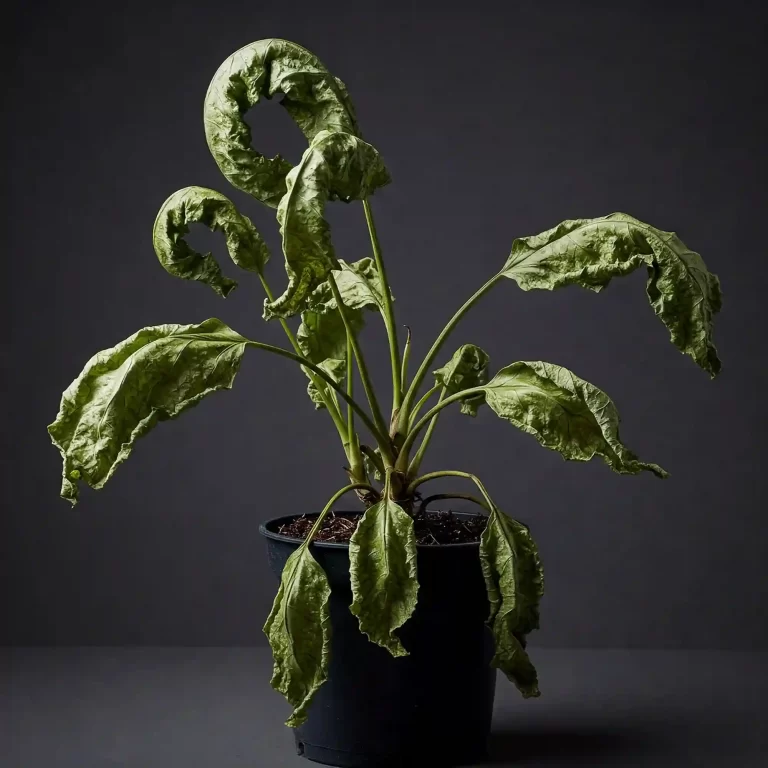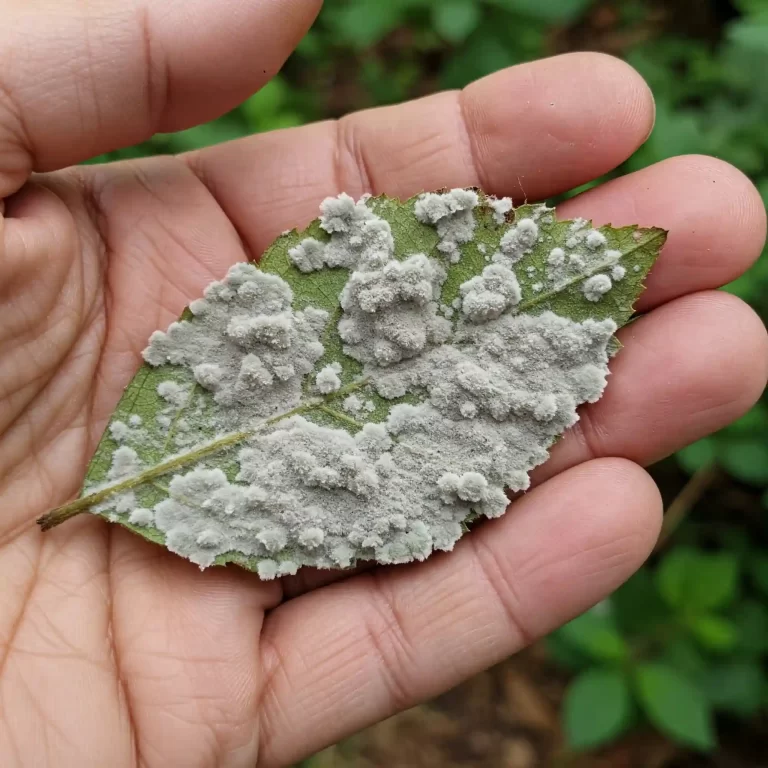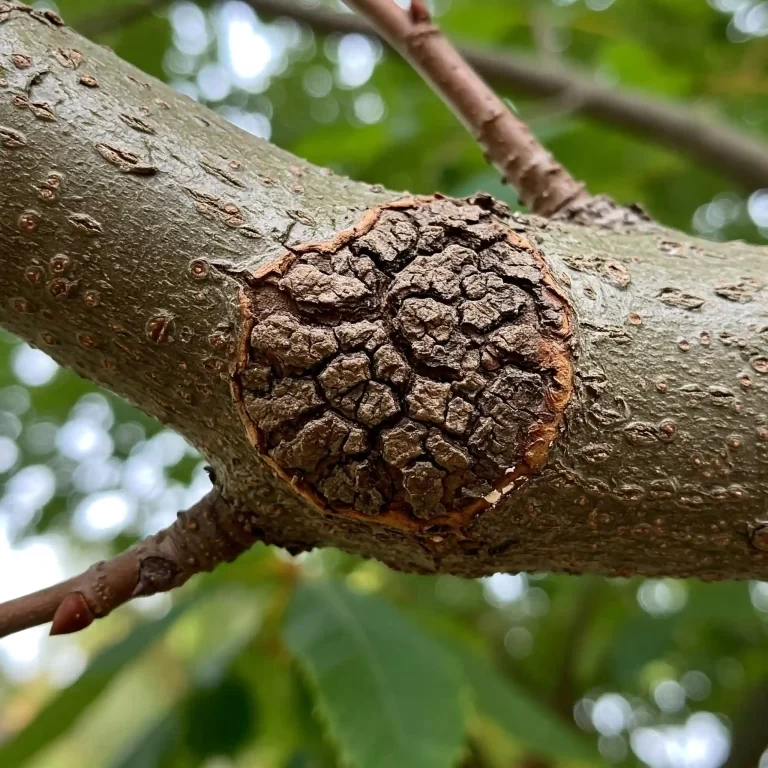Have you ever noticed unsightly lesions creeping up the stems of your rice plants, or perhaps a similar issue affecting your precious turfgrass? It’s a disheartening sight, especially after all the hard work you’ve poured into your garden or field. The problem might be basal sheath rot, a fungal disease that can quickly devastate your crops if left unchecked. The frustration of watching your plants succumb to disease is something I know all too well from my years in the garden. But don’t worry, there’s hope! In this comprehensive guide, I’ll share everything I’ve learned about basal sheath rot, from identifying its early signs to implementing effective prevention and control strategies. You’ll gain the knowledge and tools you need to protect your plants and ensure a healthy, bountiful harvest or a lush, vibrant lawn.
What is Basal Sheath Rot?
Basal sheath rot, a term that might sound technical, is simply a plant disease affecting the lower leaf sheaths, stems, and sometimes even the crown and roots of various plants. This disease is particularly prevalent in rice cultivation but can also impact other grasses, including turfgrass, wheat, barley, and corn. As a gardener, I’ve seen firsthand the damage this disease can inflict, and I understand how important it is for you to understand it.
At its core, basal sheath rot is usually caused by fungal pathogens, with Rhizoctonia solani being the most common culprit. However, in some cases, bacteria can also contribute to the infection. The disease manifests itself in a few key ways: you’ll notice lesions, discoloration, and, in severe cases, outright rotting of the affected plant tissues. I’ve observed that the progression can be quite rapid under the right conditions, which is why early detection is so crucial.
The impact of basal sheath rot can be significant. For commercial farmers, it can lead to substantial yield losses, impacting their livelihood. For home gardeners like you and me, it can mean the loss of carefully nurtured plants and the disappointment of a failed harvest. That’s why understanding the characteristics of this disease is the first crucial step in protecting your plants.
Here’s a breakdown of the key characteristics of basal sheath rot:
Key Characteristics of Basal Sheath Rot
| Characteristic | Description |
| Causative Agent | Primarily the fungus Rhizoctonia solani, sometimes bacteria. |
| Affected Plant Parts | Lower leaf sheaths, stems, and in severe cases, the crown and roots. |
| Visual Symptoms | Lesions (initially small and water-soaked), discoloration (grayish-green to brown), rotting of tissues, and sometimes a characteristic odor. |
| Impact on Plants | Stunting, reduced tillering (in grasses), poor grain filling (in rice), and potentially plant death. Can significantly reduce yield and quality. |
| Favorable Conditions | High humidity, warm temperatures (around 25-30°C or 77-86°F), and waterlogged soil conditions. Poor drainage and excessive irrigation contribute significantly. |
| Susceptible Plants | Primarily rice, but also other grasses like turfgrass, wheat, barley, and corn. |
| Spread | The pathogen can spread through infected plant debris, contaminated soil, and even irrigation water. The fungal structures known as sclerotia can survive in the soil for extended periods, making it a persistent problem. |
I’ve learned that understanding the life cycle of the pathogen, especially Rhizoctonia solani, is crucial in managing this disease. This fungus thrives in warm, humid conditions and can persist in the soil for long periods in the form of sclerotia – hard, resistant structures that act like survival capsules. These sclerotia can germinate when conditions become favorable, initiating new infections. This is why proper soil management and preventative measures are so important.
Identifying Basal Sheath Rot: Symptoms and Signs
Recognizing basal sheath rot early is vital for effective management. From my experience, the quicker you spot the signs, the better your chances of saving your plants. Here’s what to look for:
- Early Symptoms: The initial signs often appear as small, water-soaked lesions on the lower leaf sheaths, particularly near the waterline in rice paddies. These lesions can be subtle at first, so you’ll need a keen eye. I’ve noticed they often have a grayish-green or light brown hue, which can sometimes blend in with the natural color of the plant.
- Progression of the Disease: As the infection takes hold, these small lesions begin to expand and may merge, creating larger, more noticeable areas of discoloration. The affected tissue starts to rot, becoming soft and mushy to the touch. This rotting is a clear indication that the disease is progressing.
- Effects on the Plant: The impact of basal sheath rot goes beyond just surface blemishes. In severe cases, I’ve seen it cause significant stunting in plant growth, hindering their ability to reach their full potential. In grasses like rice, it can also reduce tillering, which is the formation of new shoots from the base of the plant. This directly affects the yield, as fewer tillers mean fewer grain-producing stems. In the worst-case scenario, the infection can lead to the death of the plant, a devastating outcome for any gardener.
- Effects on Rice Plants: In rice cultivation, basal sheath rot has some specific effects that you should be aware of. The disease can interfere with the plant’s ability to fill its grains properly, resulting in lightweight or empty grains, significantly reducing the quality and quantity of your harvest.
- Affected Plants: While rice is the most commonly affected crop, basal sheath rot isn’t exclusive to it. I’ve also encountered it in other grasses such as turfgrass, wheat, barley, and even corn. So, if you’re growing any of these, it’s essential to be vigilant for the telltale signs of this disease.
Here’s a summary of the symptoms to help you quickly identify basal sheath rot:
Basal Sheath Rot Symptoms Checklist
| Symptom | Description |
| Initial Lesions | Small, water-soaked spots on the lower leaf sheaths, often near the waterline. |
| Lesion Color | Grayish-green to light or dark brown. |
| Advanced Lesions | Enlarged and coalesced lesions, leading to extensive rotting of the sheath. |
| Tissue Texture | Soft and mushy in the affected areas due to the rotting process. |
| Plant Growth | Stunted growth and reduced tillering (especially in grasses). |
| Grain Fill (in Rice) | Poor grain filling, resulting in lightweight or empty grains. |
| Overall Plant Health | In severe cases, the disease can cause plant death. |
| Characteristic Odor | In advanced stages of decay, a foul odor may be present. |
Remember, early detection is key. If you notice any of these symptoms, it’s time to take action.
Understanding the Causes of Basal Sheath Rot
To effectively combat basal sheath rot, it’s essential to understand what causes it. In my experience, knowing the enemy is half the battle. This section will delve into the primary pathogens and environmental factors that contribute to this disease.
- Primary Pathogen: Rhizoctonia solani: The main culprit behind basal sheath rot is a common soilborne fungus called Rhizoctonia solani. This fungus is a master of survival, capable of persisting in the soil for extended periods, even in the absence of a host plant. It does this by forming sclerotia, which are hard, melanized structures that act like survival capsules. These sclerotia can withstand harsh conditions and germinate when favorable conditions return, initiating new infections. I’ve learned that understanding this survival mechanism is crucial for developing effective control strategies.
- The Role of Bacteria: While Rhizoctonia solani is the primary pathogen, bacteria can sometimes play a role in basal sheath rot. These bacteria can act as secondary invaders, exacerbating the damage caused by the fungus. In some cases, certain bacteria might even be primary pathogens, although this is less common.
- Environmental Factors: The development and spread of basal sheath rot are heavily influenced by environmental conditions. Here are the key factors I’ve observed:
- High Humidity: This is a major factor. The fungus thrives in moist environments, making areas with high humidity particularly susceptible.
- Warm Temperatures: Rhizoctonia solani prefers warm temperatures, generally between 25-30°C (77-86°F). This is why basal sheath rot is often more prevalent during warmer months.
- Waterlogged Soil: This is perhaps the most significant contributing factor. Poor drainage and excessive irrigation can lead to waterlogged soil, creating ideal conditions for the fungus to thrive. I’ve seen firsthand how quickly the disease can spread in poorly drained fields.
Prevention Strategies for Basal Sheath Rot
From my years of gardening, I’ve learned that prevention is always better than cure. When it comes to basal sheath rot, implementing proactive strategies can significantly reduce the risk of infection and protect your precious plants. Here are some effective prevention methods I recommend:
- Crop Rotation: This is a fundamental practice in sustainable agriculture and gardening. By rotating your crops, you disrupt the life cycle of soilborne pathogens like Rhizoctonia solani. When you plant a non-susceptible crop in an area previously affected by basal sheath rot, the pathogen’s food source is removed, causing its population to decline. I’ve found that a well-planned crop rotation can make a huge difference in disease management over time.
- Proper Drainage: As I mentioned earlier, waterlogged soil creates the perfect environment for Rhizoctonia solani to thrive. Ensuring proper drainage is crucial in preventing basal sheath rot. This can involve several strategies:
- Improving Soil Structure: Amending your soil with organic matter, such as compost or well-rotted manure, can improve its drainage and aeration. This allows excess water to drain away more efficiently, preventing waterlogging.
- Creating Drainage Ditches or Furrows: In fields or larger gardens, creating drainage ditches or furrows can help channel excess water away from the plants.
- Raised Beds: If you’re gardening in an area with heavy clay soil or poor drainage, consider using raised beds. This elevates the plants above the waterlogged soil, providing better drainage and aeration.
- Seed Treatment: This is a proactive measure that can protect your seedlings from early infection. Treating seeds with appropriate fungicides before planting can create a protective barrier against soilborne pathogens. This is particularly important for susceptible crops like rice. I always advise following the manufacturer’s instructions carefully when using seed treatments.
- Resistant Varieties: If you’re growing crops that are highly susceptible to basal sheath rot, consider planting resistant varieties. These varieties have been bred to have a natural resistance to the disease, reducing the risk of infection. Consult your local agricultural extension service or seed supplier for information on resistant varieties available in your area.
- Balanced Fertilization: While fertilizers are essential for plant growth, excessive nitrogen fertilization can make plants more susceptible to disease. I recommend using a balanced fertilizer and avoiding over-application of nitrogen. Soil testing can help you determine the appropriate nutrient levels for your plants.
Here’s a list of key preventative measures to keep in mind:
Basal Sheath Rot Prevention Checklist
- Implement crop rotation practices.
- Ensure proper drainage in your fields or gardens.
- Consider seed treatment with fungicides.
- Plant resistant varieties of susceptible crops.
- Use balanced fertilization and avoid excessive nitrogen.
- Maintain good field sanitation by removing infected plant debris.
- Avoid excessive irrigation.
- Promote good air circulation around plants.
By implementing these preventative measures, you can create a healthier environment for your plants and significantly reduce the risk of basal sheath rot. Remember, a proactive approach is always the best defense against plant diseases.
Effective Control and Management of Basal Sheath Rot
Even with the best preventative measures, basal sheath rot can sometimes still appear. When that happens, it’s crucial to have effective control and management strategies in place. Over the years, I’ve experimented with various methods, and here are some of the most reliable approaches I’ve found:
- Fungicide Application: When the disease is present, fungicides can be a valuable tool in managing basal sheath rot. However, it’s essential to use the right type of fungicide and apply it correctly.
- Types of Fungicides: Several fungicides are effective against Rhizoctonia solani, the primary pathogen responsible for basal sheath rot. These include active ingredients like azoxystrobin, propiconazole, and flutolanil. It’s crucial to consult with your local agricultural extension service or a qualified plant pathologist to determine the most appropriate fungicide for your specific situation and crop.
- Application Timing and Rates: The timing of fungicide application is critical. Ideally, fungicides should be applied at the first signs of the disease. Following the manufacturer’s instructions carefully regarding application rates and frequency is also essential. Overuse of fungicides can lead to resistance development in the pathogen and can also have negative environmental impacts.
- Types of Fungicides: Several fungicides are effective against Rhizoctonia solani, the primary pathogen responsible for basal sheath rot. These include active ingredients like azoxystrobin, propiconazole, and flutolanil. It’s crucial to consult with your local agricultural extension service or a qualified plant pathologist to determine the most appropriate fungicide for your specific situation and crop.
- Biological Control: This is an increasingly popular approach to disease management that relies on beneficial microorganisms to suppress plant pathogens. Several biological control agents have shown promise in controlling Rhizoctonia solani:
- Trichoderma spp.: These beneficial fungi can parasitize and kill Rhizoctonia solani, reducing its population in the soil.
- Bacillus subtilis: This bacterium can produce antifungal compounds that inhibit the growth of Rhizoctonia solani.
- Application of Biological Control Agents: These biological control agents can be applied as seed treatments, soil drenches, or foliar sprays. They are often most effective when used in conjunction with other management strategies.
- Trichoderma spp.: These beneficial fungi can parasitize and kill Rhizoctonia solani, reducing its population in the soil.
- Cultural Practices: Certain cultural practices can also help manage basal sheath rot:
- Removing Infected Plant Debris: Removing and destroying infected plant debris can help reduce the amount of pathogen present in the field or garden.
- Improving Air Circulation: Promoting good air circulation around plants can help reduce humidity levels, making the environment less favorable for the pathogen. This can be achieved by proper spacing of plants and pruning or thinning when necessary.
- Removing Infected Plant Debris: Removing and destroying infected plant debris can help reduce the amount of pathogen present in the field or garden.
- Integrated Pest Management (IPM): This is a holistic approach to pest and disease management that combines various strategies to achieve long-term control. IPM emphasizes prevention and monitoring and uses interventions only when necessary. An IPM approach to basal sheath rot might involve:
- Regularly scouting fields or gardens for signs of the disease.
- Implementing preventative measures like crop rotation and proper drainage.
- Using biological control agents and fungicides judiciously.
- Regularly scouting fields or gardens for signs of the disease.
Here’s a table summarizing the different control and management options:
Basal Sheath Rot Control and Management Options
| Method | Description |
| Fungicide Application | Use appropriate fungicides at the recommended rates and timings. Consult local experts for specific recommendations. |
| Biological Control | Apply beneficial microorganisms like Trichoderma spp. and Bacillus subtilis as seed treatments, soil drenches, or foliar sprays. |
| Cultural Practices | Remove infected plant debris, improve air circulation, and ensure proper spacing of plants. |
| Integrated Pest Management (IPM) | Combine various strategies, including prevention, monitoring, biological control, and fungicide application, for a holistic and sustainable approach. |
Basal Sheath Rot in Different Plants
While basal sheath rot is most notorious for its impact on rice, it’s important to remember that this disease can affect a range of other plants as well. From my experience, understanding the specific manifestations of basal sheath rot in different plant species is crucial for accurate diagnosis and effective management. Let’s take a closer look at how this disease presents itself in some common plants:
- Basal Sheath Rot in Rice: As we’ve discussed, rice is highly susceptible to basal sheath rot. In rice plants, the disease typically begins as small, water-soaked lesions on the lower leaf sheaths, near the waterline. These lesions can quickly expand, causing the sheaths to rot and eventually leading to significant yield losses. In severe cases, the infection can even kill the entire plant.
- Basal Sheath Rot in Turfgrass: Basal sheath rot can also be a problem for turfgrass, particularly in warm, humid climates. The disease often appears as irregular patches of dead or dying grass. Upon closer inspection, you’ll notice that the base of the affected grass blades is discolored and rotten. This can weaken the turf and make it more susceptible to other stresses, such as drought or foot traffic.
- Basal Sheath Rot in Other Crops (Wheat, Barley, Corn): While less common than in rice and turfgrass, basal sheath rot can also affect other cereal crops like wheat, barley, and corn. In these plants, the disease typically attacks the lower stem and leaf sheaths, causing similar symptoms to those observed in rice. This can lead to reduced yields and lower grain quality.
Key Considerations for Different Plants
| Plant | Specific Symptoms | Management Strategies |
| Rice | Small, water-soaked lesions on lower leaf sheaths near the waterline; rapid expansion of lesions; rotting of sheaths; yield loss; plant death in severe cases. | Seed treatment; proper water management; fungicide application; resistant varieties; crop rotation. |
| Turfgrass | Irregular patches of dead or dying grass; discoloration and rotting of the base of grass blades; weakened turf. | Proper drainage; thatch management; fungicide application; resistant varieties; avoid excessive nitrogen fertilization. |
| Wheat | Lesions on lower stem and leaf sheaths; reduced tillering; yield loss. | Crop rotation; proper drainage; seed treatment; fungicide application. |
| Barley | Similar symptoms to wheat; lesions on lower stem and leaf sheaths; reduced yield. | Similar management strategies to wheat; crop rotation; proper drainage; seed treatment; fungicide application. |
| Corn | Lesions on lower stem and leaf sheaths; stalk rot; reduced ear size and yield. | Crop rotation; proper drainage; balanced fertilization; fungicide application (less common). |
Remember, the specific symptoms and severity of basal sheath rot can vary depending on the plant species, environmental conditions, and the virulence of the pathogen. However, by understanding the general characteristics of the disease and how it manifests in different plants, you can take appropriate steps to protect your crops and maintain a healthy garden or field.
Frequently Asked Questions (FAQ) about Basal Sheath Rot
Over my years of experience, I’ve noticed certain questions about basal sheath rot come up time and time again. So, I’ve compiled a list of frequently asked questions to provide you with quick and clear answers:
- How to identify basal sheath rot in rice seedlings?
- Look for small, water-soaked lesions near the waterline. These lesions will expand and cause rotting as the disease progresses.
- Best organic treatment for basal sheath rot in turfgrass?
- Improving drainage, increasing air circulation, and using biofungicides can be effective organic treatments.
- What are the causes of basal sheath rot in wheat crops?
- Primarily Rhizoctonia solani, favored by high humidity and excessive moisture.
- Effective cultural practices for preventing basal sheath rot in barley?
- Crop rotation, proper drainage, and balanced fertilization.
- How to control basal sheath rot without using chemical fungicides?
- Focus on cultural practices, resistant varieties, and biological control agents.
- Is basal sheath rot more prevalent in poorly drained rice paddies?
- Yes, poor drainage creates ideal conditions for the pathogen.
- Can seed treatment effectively prevent basal sheath rot infection?
- Yes, seed treatment with appropriate fungicides can protect seedlings from early infection.
- What are the long-term effects of basal sheath rot on soil health?
- Repeated infections can lead to a buildup of the pathogen (Rhizoctonia solani) in the soil, making it more challenging to grow susceptible crops in the future.
- How to differentiate basal sheath rot from other rice stem diseases?
- Basal sheath rot typically starts on the lower leaf sheaths near the waterline, while other diseases may have different initial symptoms and locations.
- Best time to apply fungicides for controlling basal sheath rot in rice?
- Apply fungicides at the first signs of the disease, following the manufacturer’s instructions.
- What are the biological control methods for managing basal sheath rot naturally?
- Using beneficial microorganisms like Trichoderma spp. and Bacillus subtilis.
- How to improve drainage to prevent basal sheath rot in rice fields?
- Creating drainage ditches or furrows, leveling the field, and improving soil structure.
- What are the economic impacts of basal sheath rot on rice farmers?
- Significant yield losses, reduced grain quality, and increased costs for disease management.
- How to diagnose and treat basal sheath rot in home lawns?
- Look for irregular patches of dead or dying grass and rotting at the base of the blades. Improve drainage, aerate the lawn, and consider using fungicides if necessary.
- Can crop rotation help in managing basal sheath rot in cereal crops?
- Yes, crop rotation can disrupt the pathogen’s life cycle and reduce its population in the soil.
- What are the latest research findings on basal sheath rot management strategies?
- Ongoing research focuses on developing more resistant varieties, improving biological control methods, and optimizing fungicide application strategies.
I hope these answers address your most pressing questions about basal sheath rot. If you have any further queries, please don’t hesitate to ask.
Conclusion: Protecting Your Plants from Basal Sheath Rot
Basal sheath rot can indeed pose a significant challenge to gardeners and farmers alike. But as I’ve shared throughout this guide, with a clear understanding of the disease, its causes, and effective management strategies, you can successfully protect your precious plants.
Here are some key takeaways to keep in mind:
- Prevention is Paramount: Implementing preventative measures such as crop rotation, proper drainage, seed treatment, and balanced fertilization can significantly reduce the risk of basal sheath rot.
- Early Detection is Key: Regularly scout your fields or gardens for early signs of the disease. The quicker you identify the problem, the more effectively you can manage it.
- Integrated Approach is Best: Combining different control methods, such as cultural practices, biological control, and fungicide application (when necessary), is the most sustainable and effective way to manage basal sheath rot.
- Stay Informed: Keep up-to-date with the latest research and recommendations on basal sheath rot management from your local agricultural extension service or other reliable sources.
Remember, every garden and field is unique, and what works best for one situation may not be ideal for another. So, it’s essential to adapt these strategies to your specific circumstances and always observe how your plants respond.
I encourage you to use this guide as a reference and to share it with other gardeners or farmers who may be struggling with basal sheath rot. By working together and sharing our knowledge, we can create healthier and more productive gardens and fields for everyone.
